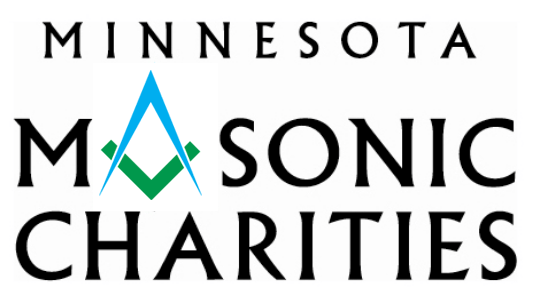The Play’s the Thing: Sidekick Theatre
July 30, 2018 For the past year, patrons have enjoyed a variety of matinée entertainment at the Ives Auditorium, from musical groups to theatrical performances. Starting in 2018, we established a partnership with Sidekick Theatre—a relatively new theater company run by Brian Pekol and Tim Stolz. Recently we sat down with Tim to learn more about how Sidekick came to be and what it takes to produce a play.
For the past year, patrons have enjoyed a variety of matinée entertainment at the Ives Auditorium, from musical groups to theatrical performances. Starting in 2018, we established a partnership with Sidekick Theatre—a relatively new theater company run by Brian Pekol and Tim Stolz. Recently we sat down with Tim to learn more about how Sidekick came to be and what it takes to produce a play.
A Background in Performance
To start a theater company, it helps to have a background in some public entertainment field. Both Brian and Tim grew up in families involved in the entertainment industry. Brian’s dad, Jim Pekol, included Brian and his brother in the band he headed. Brian played piano and drums and sang in the band.
Tim’s dad, Don Stolz, was the legendary long-time owner of the Old Log Theater in Excelsior. Don came to the Old Log as a summer stock director in 1941. He bought the theater in 1946 and grew it into one of the most successful commercial ventures in the country. Tim and his four brothers grew up acting, designing sets, managing the stage or doing whatever else was needed.
Don sold the Old Log Theater in 2013, and Tim stayed on to help the new owners learn the ropes. Brian was already on staff as an actor and musical director. A couple years later, when an opportunity at StageNorth in Washburn, Wisconsin opened up, Tim and Brian decided to strike out on their own.
With Tim’s lifetime of theatre experience and Brian’s musical performance expertise, the pair launched Sidekick Theatre with a 2015 summer of shows in northern Wisconsin. Their first two shows were a comedic adaptation of The 39 Steps and the musical, Little Shop of Horrors. Then they began to produce children’s shows at the theater inside The Women’s Club of Minneapolis during the fall, and returned north again to Wisconsin for their second summer season in 2016.
Finding a New Home
After two summers of splitting their time between the Cities and northern Wisconsin, Sidekick wanted to find a Twin Cities theater venue that would work for all seasons. A chance meeting with Mary Kay Fortier Spalding—who was then appearing at the Ives in Driving Miss Daisy—brought the Minnesota Masonic Heritage Center into contention.
Once Brian and Tim toured the Heritage Center and met with director Keir Johnson, there was no doubt where Sidekick would land. The intimate feel of the Ives (despite seating 400+ guests), its wonderful acoustics, back stage amenities, free parking and the professional catering staff for matinée lunches met every requirement. And, as Tim said, “We fell in love with the space.”
Producing a Play
While audiences get to simply enjoy the polished theatrical performances at the Ives, there’s a lot of work that goes on before the curtain rises on a new show. Starting a year to 18 months before a show launches, Tim and Brian must follow a certain series of steps.
First, they have to choose shows to produce or create an original show. Tim asserted that he chooses shows more from a gut feeling than from any set guidelines. “There has to be a balance,” Tim stated, “between what you know your audience will like and what you would enjoy producing.” He also gravitates toward material with an emotional pull that audiences will find meaningful.
Once Tim and Brian choose a show, it’s time to audition cast members, identify the director, and work out the details around set design, costumes, lighting and sound. Cast rehearsals start a month or so ahead of the show opening. Since Tim and Brian like to work collaboratively with the actors, the show often goes through some fine tuning during rehearsals.
Candace Barrett and Raye Birk in a scene from The Gin Game.
Take The Gin Game. Starring stage and screen veterans Candace Barrett and Raye Birk (pictured above), The Gin Game uses strong character development to animate the story. When rehearsing a play like this, Tim helps actors find the characters’ back story. They explore what life events brought the characters to this point and what factors have shaped their attitudes about life.
Producing a Musical
Musicals follow the same basic steps for production, plus a few more. With a musical, the show requires a musical director and choreographer in addition to the stage director.
Then there’s the music. As much as possible, Sidekick Theatre actors perform live music instead of acting with recorded tracks. For shows like Radio Gals, that means some of the actors must also be musicians. Rehearsals for a musical, Tim noted, are 40 percent music, 40 percent choreography and just 20 percent dialogue. Once the rehearsals evolve from individual scenes and songs to the entire show, the focus turns to finding the right tempo to keep the audience engaged.
The main character in Radio Gals, Hazel Hunt, leads an orchestra. The actors in her orchestra must therefore play instruments, sing and master choreography. Though it’s a bit more challenging, musicals are also a lot of fun. Tim reported that the actors in Radio Gals are enjoying rehearsal so much that audiences are bound to have fun just watching them.
Plays for Children
Sidekick Theatre also produces two children’s plays each year—one in summer and another in fall/winter. Children’s plays are shorter than adult plays, so are timed carefully to run about an hour. They must also be paced to hold children’s attention, and employ humor to keep situations light and gently reinforce lessons.
Boogie Down to Bremen Town, Sidekick Theatre’s musical children’s summer play, emphasizes the value of teamwork (as shown in the picture at the top). Their winter play, a musical fairy tale based on the classic Little Red Riding Hood, touches on the topics of good vs evil and believing in oneself.
Plays have existed for centuries. As an artistic expression, they both reflect life and tell life truths. Thanks to Sidekick Theatre, the Ives Auditorium will have a series of plays for adults and children for years to come.




